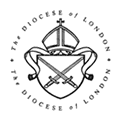Historical sources for a Statement of Significance
Material history: The development of the Church and its buildings and content in detail
Nearly all church buildings change over time. There are a variety of reasons for exterior and interior developments to occur. The alteration of an interior may have had a theological motivation, and many churches have been developed according to shifting patterns of churchmanship. An alteration might be a practical response to changing circumstances; for example, the building of a new porch or vestry, or the erection of a gallery or of additional aisles because of rising attendances (or perhaps the unrealistic expectations of the incumbent!).
A Statement of Significance requires you to show understanding of the development of a church building. You will also be required to summarize the significance of additions to the building and its furnishings, the latter including information on (if applicable) the altar, reredos, pulpit, lectern, font, stained glass, wall paintings, pews and pew platforms, monuments, bells and frame, organ, plate, registers, woodwork and metalwork, communion rails and war memorials.
The following sources can be useful:
- The Victoria County History for Middlesex will often provide valuable insights into the developments of exteriors and interiors (copies are available in reference libraries, or online at www.british-history.ac.uk - from the home page click on ‘London' and then on ‘Victoria County History: Middlesex').
- The Cathedrals and Church Buildings Library is a storehouse of material relating to ecclesiastical architecture, art, design and liturgy, with over 13,000 books on these topics and files on 16,000 parish churches. It also contains the detailed records of the contents of individual churches compiled by the National Association of Decorative and Fine Arts Studies (NADFAS) Church Recorders. The library is the shared resource of the Church Buildings Council and the Cathedrals Fabric Commission for England.
- Photographic evidence from different periods in the life of the church can provide supporting visual evidence of change. Again, the Cathedrals and Church Buildings Library is an important resource, as its files include extensive collections of photographs and postcards of individual churches at different points in time.
- The faculty papers of the Diocese of London, which can be found at the London Metropolitan Archive, provide details of previous changes in church buildings and grounds. These papers may include:
- Previous petitions in request of a faculty.
- Citations by those opposed to individual petitions.
- Supporting documentation, including information provided by surveyors, architects and craftsmen, such as plans, specifications and estimates.
- Letters of consent from the patron and the bishop of the diocese.
Go to:





